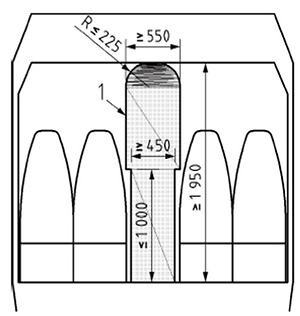Changes in the TSI requirements for vehicles adapted for disabled people traveling
1
Instytut Pojazdów Szynowych „TABOR”
Publication date: 2016-04-02
Rail Vehicles/Pojazdy Szynowe 2016,2,60-70
ABSTRACT
Since January 1st 2015 new requirements for the technical specifications of rail
system interoperability (TSI) in the European Community came into effect. One of
the most significant changes both in terms of the requirements and the scope of
activities applies to the Commission’s Decision of 21st of December 2007. It applies
to the technical specification of interoperability relating to 'persons with reduced
mobility' in the trans-European conventional rail system and the trans-
European high speed rail system. It was replaced by Commission Regulation (EU)
No 1300/2014 of 18th November 2014, on the technical specifications for interoperability
relating to the availability of the EU rail system for disabled persons and
persons with reduced mobility. The article presents the main aspects of the changes
made to the European regulations aimed to adapt the rolling stock to persons with
disabilities.
The analysis showed significant changes in European legislation. The changes are
important for units involved in the admission of vehicles to verify compliance with
the provisions of the TSI and for research laboratories. In order to ensure the adherence
to the legislation appropriate solutions must arise at the stage of projects
and construction of rail vehicles. Cooperation between the manufacturers and designers
as well as units verifying compliance to the requirements should start from
the earliest stages of the project. An important element of cooperation should be
intermediate certificates issued at all stages of the vehicle development process
REFERENCES (5)
1.
Decyzja Komisji nr 2008/164 z dnia 21 grudnia 2007 r. dotycząca technicznej specyfikacji interoperacyjności w zakresie aspektu „Osoby o ograniczonej możliwości poruszania się” transeuropejskiego systemu kolei konwencjonalnych i transeuropejskiego systemu kolei dużych prędkości.
2.
Rozporządzenie Komisji (UE) nr 1300/2014 z dnia 18 listopada 2014 r. w sprawie technicznych specyfikacji interoperacyjności odnoszących się do dostępności systemu kolei Unii dla osób niepełnosprawnych i osób o ograniczonej możliwości poruszania się.
3.
Dyrektywa 2008/57/WE Parlamentu Europejskiego i Rady z dnia 17 czerwca 2008 r. w sprawie interoperacyjności systemu kolei we Wspólnocie.
4.
Ustawa z dnia 28 marca 2003 r. o transporcie kolejowym (z późn. zmianami) (Dz. U. z 2015 r. poz. 1297).
5.
Decyzja Komisji nr 2010/713/UE z dnia 9 listopada 2010 r. w sprawie modułów procedur oceny zgodności, przydatności do stosowania i weryfikacji we stosowanych w technicznych specyfikacjach interoperacyjności przyjętych na mocy dyrektywy parlamentu europejskiego i rady 2008/57/WE.
We process personal data collected when visiting the website. The function of obtaining information about users and their behavior is carried out by voluntarily entered information in forms and saving cookies in end devices. Data, including cookies, are used to provide services, improve the user experience and to analyze the traffic in accordance with the Privacy policy. Data are also collected and processed by Google Analytics tool (more).
You can change cookies settings in your browser. Restricted use of cookies in the browser configuration may affect some functionalities of the website.
You can change cookies settings in your browser. Restricted use of cookies in the browser configuration may affect some functionalities of the website.



